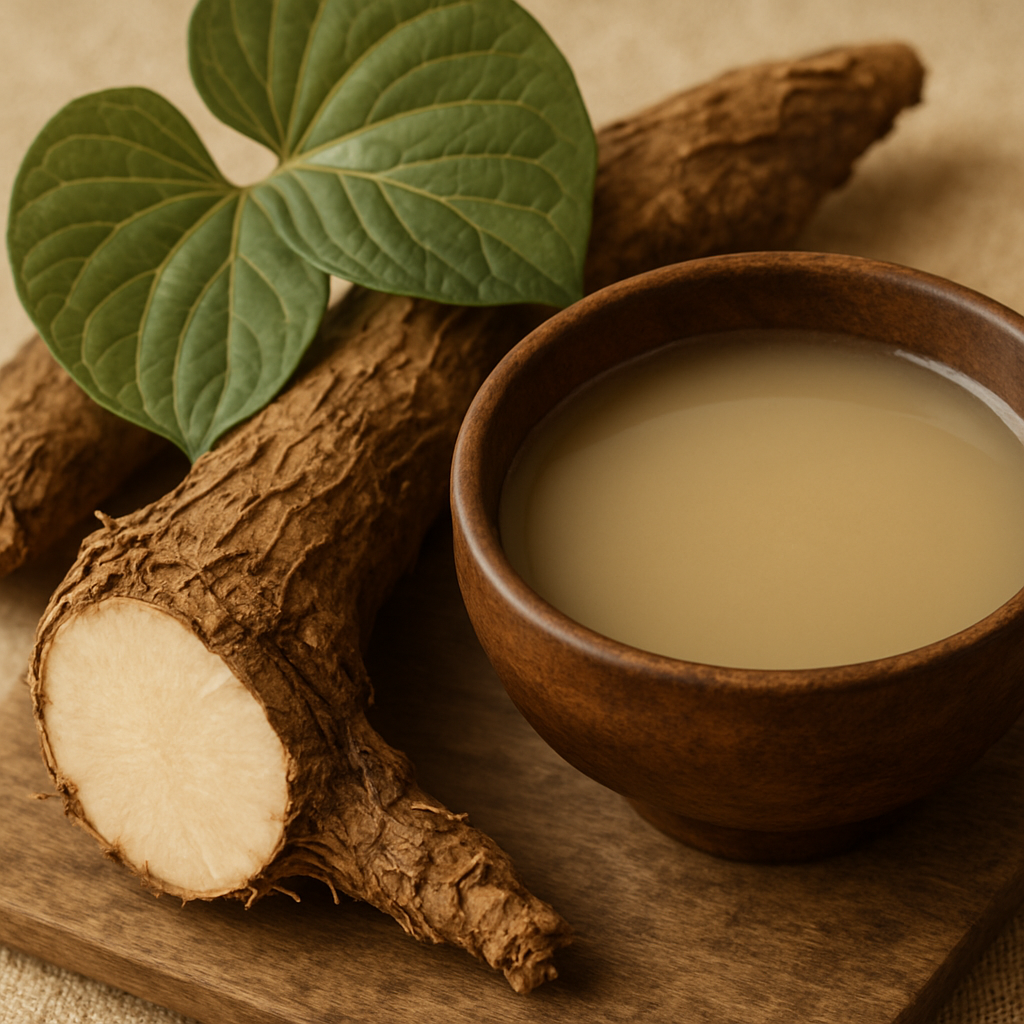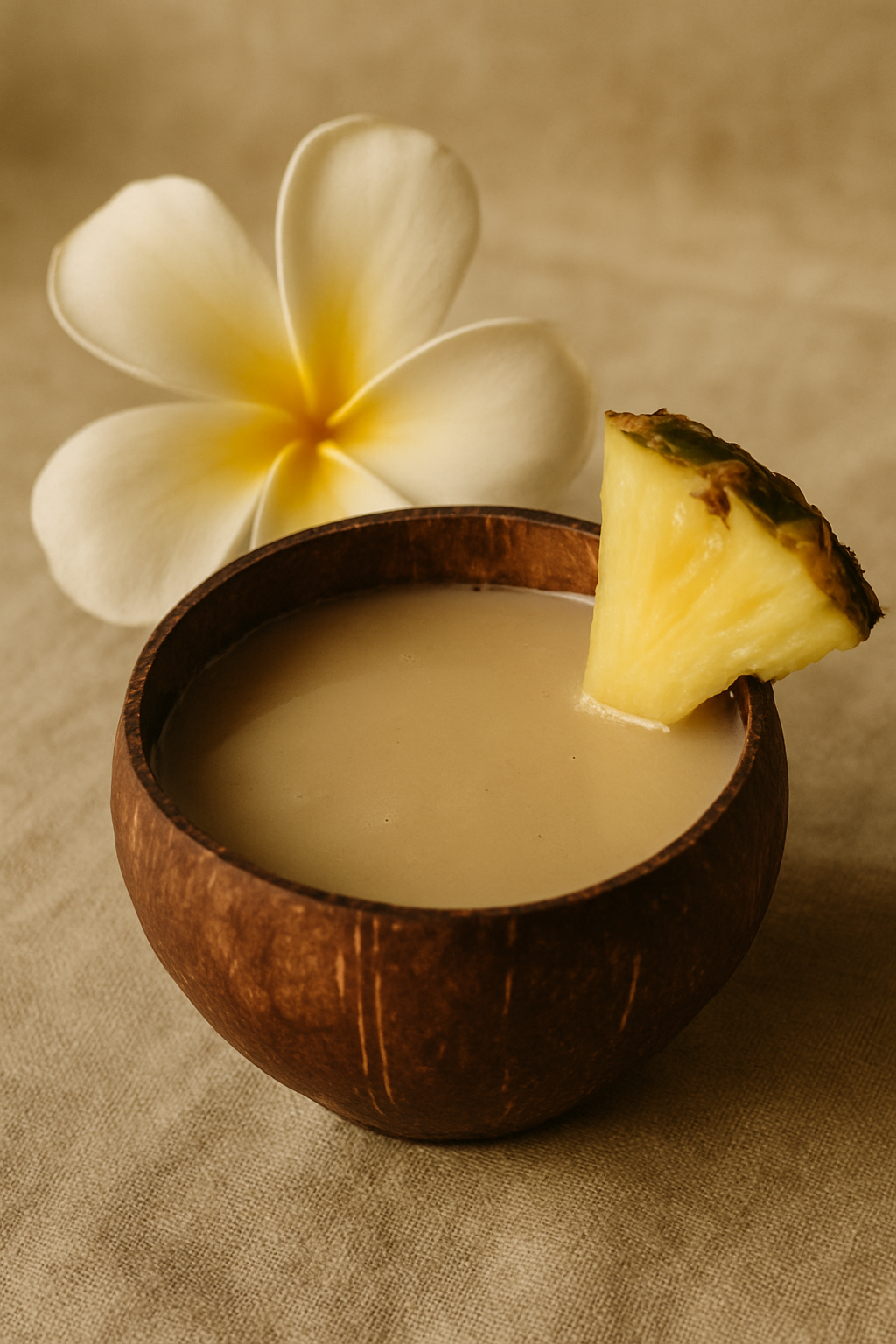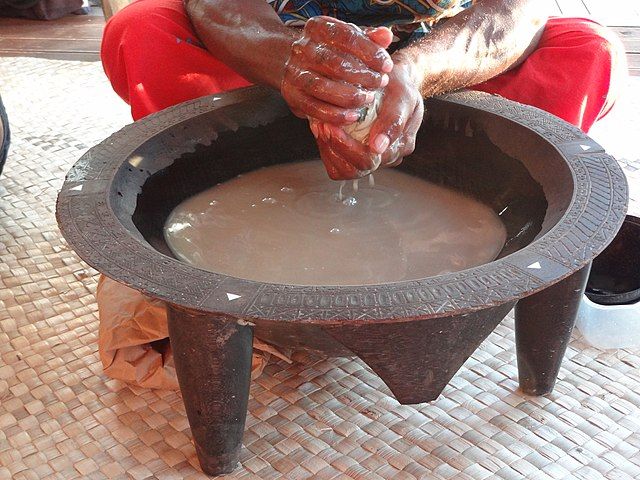
About Kava
Kava (Piper methysticum) has been consumed in Pacific Island cultures for thousands of years as a ceremonial and social beverage. The root is prepared as a drink that produces mild relaxation without impairing mental clarity.
Modern kava bars have introduced this traditional preparation to Western audiences, creating community spaces centered around this alcohol alternative. Scientific research continues to validate kava's potential benefits for anxiety reduction and stress management.
As with any botanical supplement, it's best to consult your doctor or healthcare professional before adding kava to your routine.
Benefits of Kava
Kava offers a natural way to relax, ease social anxiety, and support restful sleep without impairing mental clarity. As a plant-based alternative to alcohol, it promotes wellness and connection in both social and personal settings.
Promotes Relaxation
Kava's kavalactones interact with GABA receptors in the brain, helping to reduce stress and anxiety while promoting a sense of calm without impairing mental clarity.
Enhances Social Connection
Traditionally used in community gatherings, kava helps facilitate conversation and bonding by reducing social anxiety and promoting a sense of openness and clear-headed connection.
Supports Sleep Quality
Many users report improved sleep quality when consuming kava in the evening, experiencing more restful sleep without the grogginess associated with sleep medications.
Alcohol Alternative
Kava provides a relaxing social experience without the negative effects of alcohol, making it an excellent option for those seeking to reduce alcohol consumption or maintain sobriety.
Kava Preparation Methods
Kava can be prepared through traditional cold-water extraction or modern methods like blending, with many kava bars offering flavor enhancements to make the drink more accessible to a wider audience.
Traditional Preparation
The traditional preparation involves grinding dried kava root into a fine powder, placing it in a straining cloth (often made from coconut fiber), and kneading it in cold water. This process releases the kavalactones into the water, creating a milky, earthy-tasting beverage that is often served in a coconut shell.
Modern Adaptations
Contemporary kava bars often use blenders or specialized kava machines to speed up the extraction process while maintaining the traditional principles. Some establishments also offer instant kava products that can be mixed directly with water for convenience.
While purists prefer kava in its natural form, many kava bars offer flavor additions such as fruit juices, coconut milk, or honey to make the earthy taste more palatable for newcomers.

The Science Behind Kava
Kava’s active compounds, kavalactones, promote relaxation by enhancing GABA activity in the brain without impairing cognition or causing dependency. Clinical studies support its effectiveness in reducing anxiety, with ongoing research exploring benefits for sleep and stress management.
Mechanism of Action
Research suggests that kavalactones work by enhancing GABA activity in the brain, similar to conventional anti-anxiety medications but through different pathways. This interaction produces relaxation without significantly impairing cognitive function or causing dependency.
Clinical Research
Multiple clinical studies have demonstrated kava's effectiveness for reducing anxiety, with some research suggesting it may be comparable to pharmaceutical options for mild to moderate anxiety disorders. Ongoing research continues to explore its potential applications for sleep disorders and stress management.

The Cultural Heritage of Kava
Kava has been an integral part of Pacific Island cultures for thousands of years, playing a central role in religious ceremonies, social gatherings, and traditional medicine. In Fiji, Tonga, Samoa, and Vanuatu, kava ceremonies remain an important cultural practice for welcoming guests, celebrating important events, and resolving conflicts.
These ceremonies typically involve the preparation of kava in a communal bowl, with participants sitting in a circle as the drink is shared. The ritual emphasizes respect, community bonds, and the passing down of cultural traditions from one generation to the next.
Today's kava bars honor this rich cultural heritage while adapting the experience for contemporary settings. Many establishments incorporate traditional elements such as the ceremonial preparation of kava and communal seating arrangements that encourage conversation and connection.
A Natural Path to Connection and Calm
Kava offers more than just a relaxing beverage—it’s a gateway to a healthier, more intentional lifestyle. Whether enjoyed in traditional ceremonies or modern kava bars, its calming effects, cultural significance, and role as an alcohol alternative make it a compelling option for those seeking balance, clarity, and meaningful social connection. Backed by both tradition and science, kava provides a gentle yet powerful way to unwind and reconnect.
As awareness grows, so does the opportunity to foster responsible use, education, and appreciation of this remarkable plant. By supporting kava culture and its ethical preparation, we not only honor its heritage but also help shape a future where wellness, community, and conscious living go hand in hand.
